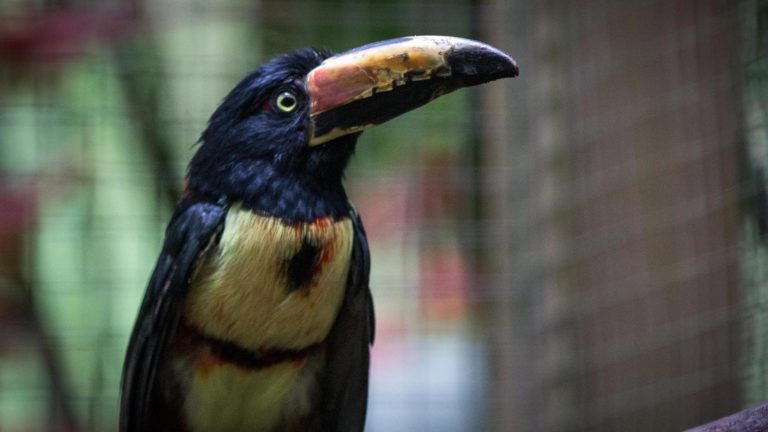Collared Aracari Pteroglossus torquatus
Taxonomy
Scientific name:
Pteroglossus torquatus
Family:
Ramphastidae
Genus:
Pteroglossus
Species:
Torquatus
Common names:
Collared aracari
Biology
Morphology:
Collared aracaris have a black head and chest. The upper parts are olive green apart from a red rump and upper tail. They have a reddish collar on the neck. The underparts are bright yellow, with a round black spot in the centre of the breast and a red-tinted black band across the belly. The thighs are chestnut. The lower edge of the upper beak has widely-spaced tooth-like protrusions. They average 41 cm in length and 230 g in weight.
Reproduction:
Collared aracaris nest in tree cavities excavated by woodpeckers or natural cavities. They are monogamous and breed once a year from January to May. They lay three eggs in a clutch and the period of incubation is 16 to 17 days which is done by both parents. They are cooperative breeders meaning offspring from previous clutches will help the parents take care of their siblings.
Diet:
They eat fledgling birds, insects, eggs and dry fruits.
Ecology
Range:
From South of Mexico to North of Colombia and Venezuela Coast. Very common at Macaw Mountain.
Habitat:
Collared Aracari occupy lowland evergreen forest and forest edge, advanced secondary forest, and plantations.
Threats
Accelerated habitat destruction, furtive hunting, illegal traffic and commerce.
IUCN Red List: Least concern.

